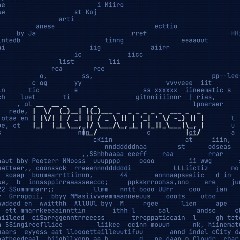ChatGPT 101: A Comprehensive Guide to Using ChatGPT for Conversational AI.
5
Introduction
ChatGPT is a pre-trained language model that can be fine-tuned for various natural language processing tasks, including conversational AI. In this guide, we will walk through the process of how to use ChatGPT to build a conversational AI system.
Prerequisites
- Python 3.6 or higher
- PyTorch library
- Transformers library
- GPU with CUDA support for faster training if available
Step 1: Fine-tune the ChatGPT model
The first step is to fine-tune the ChatGPT model on a conversation dataset. The dataset should contain pairs of questions and answers. One popular dataset used for this purpose is the Cornell Movie Dialogs Corpus, which contains over 220,579 conversational exchanges between movie characters.
To fine-tune the model, we can use the Hugging Face Transformers library, which provides an easy-to-use interface for working with pre-trained language models. Here is an example code snippet:
from transformers import AutoTokenizer, AutoModelWithLMHead
import torch
tokenizer = AutoTokenizer.from_pretrained(“microsoft/DialoGPT-medium”)
model = AutoModelWithLMHead.from_pretrained(“microsoft/DialoGPT-medium”)
example = “Hello, how are you today?”
input_ids = tokenizer.encode(example + tokenizer.eos_token, return_tensors=’pt’)
outputs = model.generate(input_ids)
response = tokenizer.decode(outputs[0], skip_special_tokens=True)
print(response)
Step 2: Build the conversational AI system
Once the model is fine-tuned, we can use it to build a conversational AI system. The system should take user input and generate a response using the ChatGPT model. Here is an example code snippet:
from transformers import AutoTokenizer, AutoModelWithLMHead
import torch
import time
tokenizer = AutoTokenizer.from_pretrained(“microsoft/DialoGPT-medium”)
model = AutoModelWithLMHead.from_pretrained(“microsoft/DialoGPT-medium”)
def generate_response(user_input):
input_ids = tokenizer.encode(user_input + tokenizer.eos_token, return_tensors=’pt’)
output = model.generate(input_ids, max_length=1000, pad_token_id=tokenizer.eos_token_id)
response = tokenizer.decode(output[0], skip_special_tokens=True)
return response
while True:
user_input = input(“User: “)
if user_input.lower() == ‘quit’:
break
start = time.time()
response = generate_response(user_input)
end = time.time()
print(“Bot: ” + response)
print(“Time: {:.2f}”.format(end – start))
Step 3: Deploy the ChatGPT-based conversational AI system
Once the system is built, it can be deployed to various platforms, such as web apps or messaging platforms. Here is an example code snippet for deploying the system as a Flask web app:
from flask import Flask, request, jsonify
from transformers import AutoTokenizer, AutoModelWithLMHead
app = Flask(__name__)
tokenizer = AutoTokenizer.from_pretrained(“microsoft/DialoGPT-medium”)
model = AutoModelWithLMHead.from_pretrained(“microsoft/DialoGPT-medium”)
@app.route(‘/chat’, methods=[‘POST’])
def chat():
user_input = request.json[‘input’]
input_ids = tokenizer.encode(user_input + tokenizer.eos_token, return_tensors=’pt’)
output = model.generate(input_ids, max_length=1000, pad_token_id=tokenizer.eos_token_id)
response = tokenizer.decode(output[0], skip_special_tokens=True)
return jsonify({‘response’: response})
if __name__ == ‘__main__’:
app.run(debug=False)




